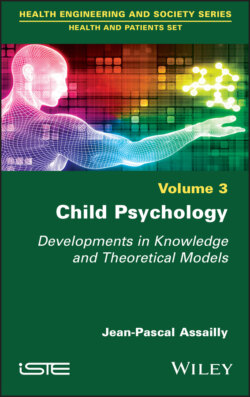Читать книгу Child Psychology - Jean-Pascal Assailly - Страница 44
1.7.3. Risk behaviors and rites of passage
ОглавлениеFrom birth to death, the individual passes through a certain number of states and statuses and, since the beginning of humanity, societies have created rites to frame and operate these passages. These rites can concern the stages of life (such as burial to pass from the state of life to that of death), changes in religious status (baptism to pass from the profane to the sacred state), temporal markers (seasonal rites) and so on.
Each society has developed its own rites, but we owe to ethnologist and folklorist Arnold van Gennep (1909) the idea of an anthropological structure common to all rites in his work The Rites of Passage, a systematic study of the rites of “passing through the door and over the threshold” of, for example, hospitality, adoption, pregnancy and labor, birth, childhood, puberty, initiation, ordination, coronation, engagement and marriage, funerals and the seasons.
The duration of the rites of passage between childhood and adulthood can vary in traditional societies (from two weeks to several years), but a temporal sequence and common meanings emerge; this sequential structure unfolds in three stages: the first is organized around the separation, the second around the intermediary and the margin and the third around acknowledgment of the initiation and the passage.
From the Latin etymology limen, which means “threshold”, van Gennep created three concepts:
1) preliminary rites, or rites of separation from the previous state;
2) liminal rites, carried out during the intermediate phase, putting in play testing or symbolic death;
3) postliminary rites, or rites of reintegration with the acquisition of a new status.
In traditional societies, these rites would allow for a harmonious passage from childhood to adulthood: prepubescent subjects were separated from the rest of the social group, isolated in places devoted to liminal rites and underwent a certain number of physical or moral tests, “symbolic markings” at the end of this intermediate phase. At the end of this intermediate phase, the young person was reintegrated into the group with full adult status, without restrictions.
Moreover, these rites of passage were initially different for boys and girls in traditional societies:
– in boys, they were public, exercised in groups; the period of testing was essentially applied to boys, meaning the necessary separation of the boys from their mothers, in order to reach adult, paternal or reproducer status, subject to the order of seniority; in addition, physical testing during the liminary phase was more perilous in order to make them affirm their masculinity;
– in girls, the rites were more private, less collective, more intimate, such as pregnancy, for example; there was no separation from the mother, but transmission of the procreative function, there was continuity and non-breakdown.
In our modern societies, many rites of passage have lost their meaning and validity: military service no longer exists, the baccalaureate no longer guarantees a job, marriage often leads to divorce and religion has lost its influence. In this context, which rites remain and are still functional? Can we still speak of rites of passage in modern societies?
The use of psychoactive products is currently used by many young people for this purpose (as was traditionally the case with the first drunkenness of young men), but while this use fulfills the first two functions of the rite (it symbolically separates from the world of adults and from the norm and constitutes a test of the body and mind), it seems to be of little use for the third function, reintegration with the acquisition of a new status, since this use may, on the contrary, lead to a certain marginality or even to exclusion or homelessness.
Piercings and tattoos, very in vogue at present, are indeed an equivalent of the symbolic markings of the body and the scarifications, but is that enough to confer on them a value of insertion? Running away, wandering, cars “speeding runs” and extreme sports, among other activities, do not seem to be very effective either.
A number of differences between traditional and modern rites have been identified in this regard (Jeffrey 2008):
– In traditional societies, rites were framed and supervised by adults; in modern societies, young people are much more left to their own devices. However, the test must be recognized by the community to allow for reintegration (as with school exams), particular examples being the raids or boat trips that are proposed to young offenders to reintegrate them, to learn about life in a group and to understand their limits.
– In traditional societies, rites had a transmission function concerning the fundamental question of death; today, although death is no longer part of life, our contemporaries want to be invincible and immortal, so there is a forgetfulness, an avoidance, a concealment, in short a denial of death, a sequestration of the experience. Sometimes, young people play with death in ordalic behaviors, but, today, men no longer live with death, it can no longer give meaning. Should young risk-takers be put in contact with people at the end of life, so that they become aware of the finitude of all human life?
– In traditional societies, it was enviable and recognized to become an adult; is this still the case today? Will the phenomena of endless adolescence, of “Tanguy”, of adults who constantly regret their lost youth, make people want to become adults? What do we “gain” from becoming adults today?
Because of this loss of meaning, young people recreate “marginal” rites without adults, which causes a third-phase deficiency, aggregation, hence the extension of these marginal rites and therefore of initiatory and dangerous practices.
